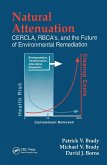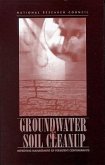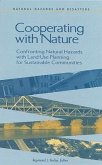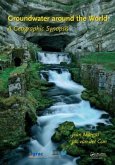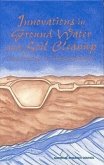In the past decade, officials responsible for clean-up of contaminated groundwater have increasingly turned to natural attenuation -- essentially allowing naturally occurring processes to reduce the toxic potential of contaminants -- rather than engineered solutions. This saves both money and headaches. To the people in surrounding communities, though, it can appear that clean-up officials are simply walking away from contaminated sites. When is natural attenuation the appropriate approach to a clean-up? This book presents the consensus of a diverse committee, informed by the views of researchers, regulators, and community activists. The committee reviews the likely effectiveness of natural attenuation with different classes of contaminants -- and describes how to evaluate the "footprints" of natural attenuation at a site to determine whether natural processes will provide adequate clean-up. Included are recommendations for regulatory change. The book also emphasizes the importance of the public's belief and attitudes toward remediation and provides guidance on involving community stakeholders throughout the clean-up process.


